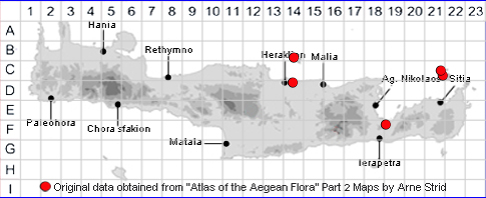
SPECIES DESCRIPTION
ATRIPLEX RECURVA
Family:- AMARANTHACEAE/A. prostrata group
Common Name:- None
Synonyms:- Atriplex tatarica ssp. recurva, Atriplex tatarica var. sibthorpii.
Meaning:- Atriplex (L) A name used by the Roman naturalist and philosopher
Pliny, from the ancient Greek meaning black and intertwined.
Recurva (L) Bent or curved backwards.
General description:- Procumbent perennial shrub, with a strongly woody, often
contorted base.
Stems:-
a) Up to 10-40 cm.
b) flowering, slender ± herbaceous.
Leaves:-
a) up to 7 x 5 cm.
b) mostly opposite.
c) stalked (petiolate).
1) Blade:
a) triangular, with a broadly wedge-shaped (cuneate) base, dentate or with rather
deep rounded wavy undulations lobes (sinuately lobed).
b) silvery- to greyish green.
Flowers:-
1) Inflorescence:
a) terminal.
b) leafless, with flowers in dense, contiguous clusters along short branches.
2) Bracteoles:
a) united (connate) to the middle.
b) broadly triangular to rhombic-orbicular.
Fruit:-
1) Seeds:
a) diamorphic, some small, biconcave, blackish, others larger, discoid, brown.
Key features:-
1) Shrubs or subshrubs.
2) Leaves dentate to sinuately lobed.
Habitat:- Rocky and occasionally gravelly or sandy seashores, on various
substrates, but mainly hard limestone. 50(-200) m.
Distribution:- Endemic to the Aegean area. Rare on Crete, known only from a few
locations.
Flowering time:- Mar-June(-July) until Oct.
Photos by:- Giorgos Pantakis
